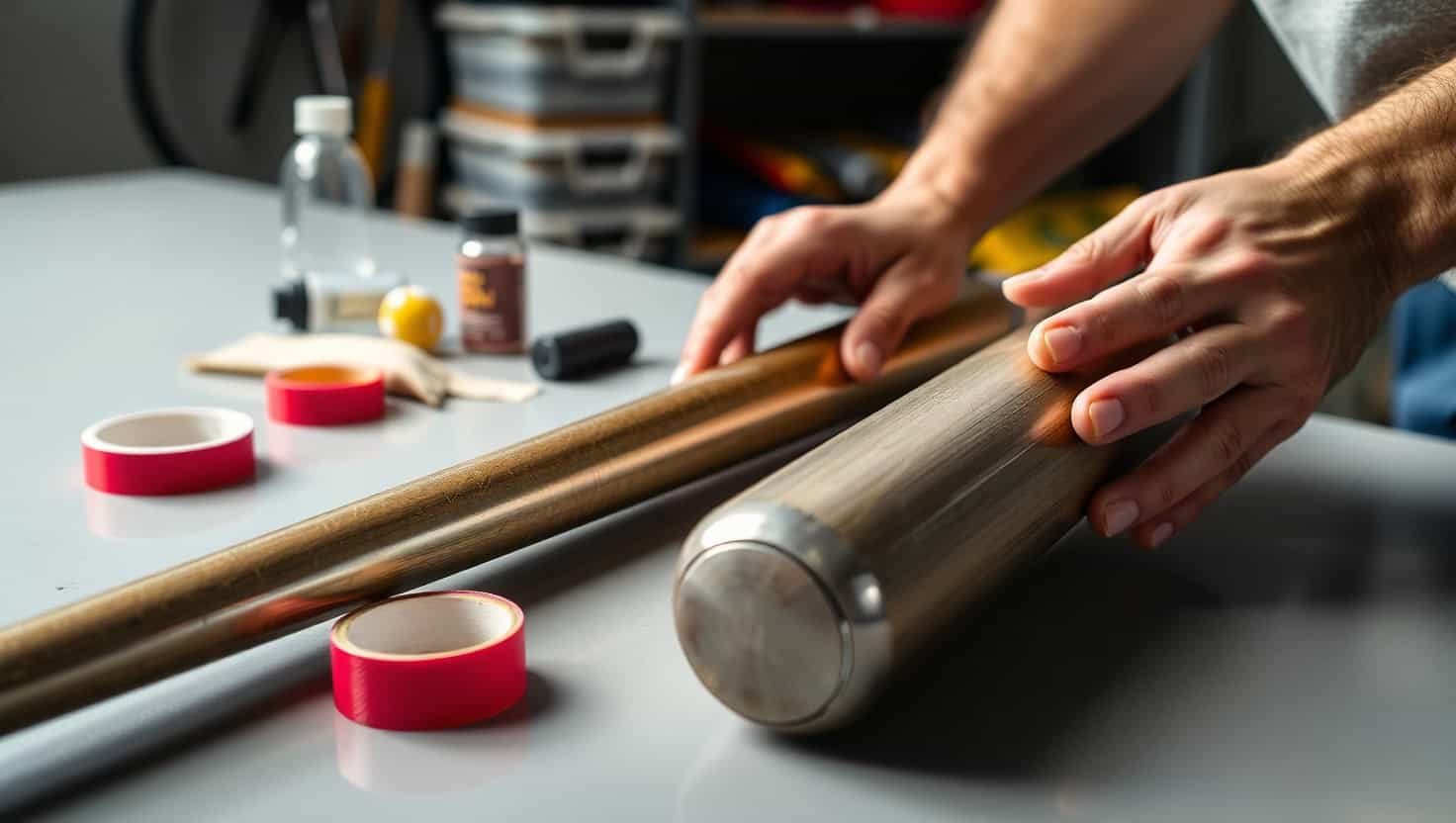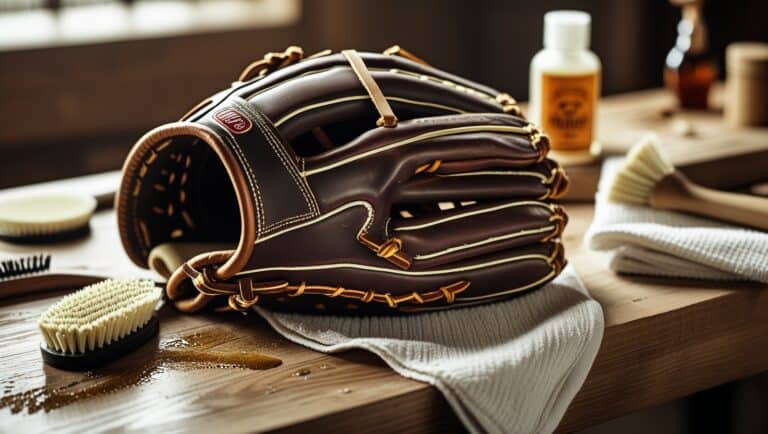Softball Bat Maintenance: Keep Crushing It! 6 Pro Tips!

Hey there, softball friends! Did you know a well-maintained softball bat can last longer than a neglected one? As a seasoned player, I’ve seen firsthand how proper softball bat maintenance can make or break your game. In this guide, we’ll dive into the details of keeping your trusty bat in top-notch condition. Get ready to unlock the secrets of softball bat maintenance care that’ll have you hitting home runs for seasons to come!
Understanding Your Softball Bat’s Anatomy
Let’s dive in and chat about softball bat anatomy, shall we? I’ve been swinging these babies for decades, and knowing your bat inside and out is crucial for proper softball bat maintenance.
First up, we’ve got the handle. This is where you grip the bat, and it’s usually wrapped in some kind of tape or grip material. It’s like the steering wheel of your bat, ya know? Next, we’ve got the barrel – that’s the meaty part that makes contact with the ball. It’s where the magic happens! Finally, there’s the end cap, which seals off the end of the barrel.
Now, when it comes to materials, we’re talking about three main types: aluminum, composite, and hybrid. Aluminum bats are the old school reliable bats of the bunch. They’re durable and don’t need much breaking in. Composite bats, on the other hand, are made from layered materials and can give you more pop, but they need some TLC to reach their full potential. Hybrid bats? They’re like the best of both worlds, with an aluminum barrel and a composite handle.
Each of these components plays a role in how your bat performs and how you need to care for it. For example, composite barrels need more breaking in than aluminum ones, and they can be more sensitive to temperature changes. It’s important to keep this in mind when you’re thinking about softball bat maintenance.
Essential Softball Bat Maintenance Techniques
Alright, let’s get down to business in letting you know how to keep your bat in tip-top shape. I’ve learned these lessons over my two and a half decades of playing.
First things first, cleaning your bat. It might seem like a no-brainer, but you’d be surprised how many players neglect this crucial step in softball bat maintenance. For aluminum bats, a simple wipe-down with a damp cloth usually does the trick. But for composite bats, you gotta be a bit more careful. Use a mild soap solution and avoid any harsh chemicals that could damage the material.
Next up, inspections. This is something I do regularly after every game or practice session. You wanna look for any cracks, dents, grip unraveling or unusual wear and tear. It’s like giving your bat a little health check-up. Catch these issues early, and you can prevent more serious damage down the line.
Oh, and here’s a pro tip that not everyone knows about: rotate your bat! Yeah, you heard me right. By rotating your bat a quarter turn after each use, you’ll ensure even wear on the barrel. It’s like rotating your tires, but for your bat!
Now, I know some of y’all might be thinking, “This sounds like a lot of work!” But putting in this effort will pay off big time in the long run. Your bat will last longer, perform better, and you’ll avoid that sinking feeling of your favorite bat giving up on you mid-season.
The Do’s and Don’ts of Bat Storage
Listen up, my friends, because this is where a lot of players make mistakes on their softball bat maintenance. Proper storage is key to keeping your bat in prime condition, and I’ve seen some real doozies when it comes to storage fails.
First off, let’s talk about temperature and humidity. Your bat isn’t a polar bear or a cactus – it doesn’t like extremes. Ideally, you want to store your bat in a cool, dry place. Not too hot, not too cold, not too humid. Extreme temperatures can mess with the materials, especially in composite bats.
When it comes to actually storing the bat, this is probably the #1 mistake players do in their softball bat maintenance routine, tossing the bat in a gear bag. Please don’t just toss it in your gear bag and forget about it! That’s a surefire way to end up with a dinged-up bat.
Now, what about some other common mistakes I’ve seen? (and, uh, maybe made once or twice). Don’t store your bat in your car trunk! I know it’s convenient, but cars can turn into ovens in the summer and freezers in the winter. Also, avoid storing it in the garage for the same reason unless it is temperature controlled.
Breaking In Your New Softball Bat
Now, we’re getting to the fun part – breaking in that shiny new bat! This is a crucial step in softball bat maintenance that a lot of newbies overlook. A properly broken-in bat can be the difference between a pop-up and a home run.
So, why do we need to break in a new bat? Well, it’s all about maximizing performance. When you first get a bat, especially a composite one, the fibers in the barrel are all tight and compact. Breaking it in helps to loosen these fibers, creating a larger sweet spot and more trampoline effect when you make contact.
Now, the process differs depending on the type of bat you’ve got. For aluminum bats, it’s pretty straightforward. Just use it in practice, and it’ll naturally break in much quicker than composite bats. Composite bats, though? That’s where things get interesting.
Here’s my step-by-step guide for breaking in a composite bat:
- Start with about 100 soft tosses, rotating the bat a quarter turn after every 10-15 hits.
- Move on to hitting off of a batting tee starting with partial power and increasing the power every 10-15 hits until you get to full power, focusing on hitting balls off the entire barrel while rotating it a quarter turn until you have hit with all parts of the barrel.
- Gradually increase the hitting power during regular practice to allow the composite fibers to slowly break in without going all out at first.
Patience is key here. Don’t try to rush the process by going all out initially or using batting machines right off the bat (pun intended). That can actually damage your new toy. Always try and break in your bat with regulation softballs and not the balls you find at the batting cages.
So, how do you know when your bat is sufficiently broken in? Well, you’ll start to notice a different sound when you make contact – it’ll be more of a “ping” than a “thud”. You’ll also feel less vibration in your hands on contact. And of course, you’ll see those balls flying further and faster!
Extending Your Bat’s Lifespan Through Proper Use
Okay, let’s talk about how to make your bat last longer through proper use. This is a big part of softball bat maintenance that often gets overlooked. I mean, we all want our bats to stick around for more than just one season, and still have pop in them right? Of course!
First things first, let’s talk about hitting technique. I know, I know, you’re probably thinking, “What does my swing have to do with maintaining my bat?” When you hit the ball, you want to make contact with the sweet spot of the bat, right in the middle of the barrel. Consistently hitting off the end or too close to the handle by your hands can put unnecessary stress on the bat and shorten its lifespan.
Another crucial factor is using the right balls. In practice, use the same type of balls you’ll be using in games. Using harder balls can damage your bat.
What about weather conditions? I’ve played in all kinds of weather. In Minnesota we have all four seasons, Winter, Spring, Summer and Fall and it can really affect your bat. In cold weather, your bat’s performance will decrease especially the composite bats, and it’s more susceptible to damage. If you’re playing in chilly conditions, try keeping your bat warmer if you can between innings. A way to do this is to put the bats back in the bat bag after each at bat. I have seen bats get cracked from being used in cold temperatures.
On the flip side, hot weather can make your bat more prone to heat damage, especially composite bats. If you’re playing in the sweltering heat, try to keep your bat in the shade between innings. And whatever you do, don’t leave it in a hot car!
Last but not least is keeping game day bats separate from practice bats. Bats get a ton of action in practice and this wears down the bats quickly. So I highly recommend only using new bats in practice to break them in properly and once they are broken in only use them for games. This will dramatically improve the longevity of the bat and improve it’s performance during games. Once your game day bats are losing their pop just put them in the practice rotation and get a new game day bat.
Creating a Softball Bat Maintenance Schedule
Alright, softball friends, we’re in the home stretch now. Let’s talk about putting all this softball bat maintenance knowledge into a practical schedule. A little organization goes a long way in keeping your bat in prime condition.
Let’s start with daily tasks. After each use, give your bat a quick wipe-down to remove any dirt or debris. It only takes a minute, but it can prevent grime from building up over time. Also this significantly reduces the chances for getting micro-cracks from the bat moving around with abrasive dirt and small rocks. Also, do a quick visual inspection for any new dings or cracks.
Weekly, you’ll want to do a more thorough cleaning. Use a damp cloth and, if needed, a mild soap solution. This is also a good time to check your grip and replace it if it’s starting to wear down.
Monthly, take some time to really inspect your bat. Look for any signs of wear and tear that might have escaped your notice during daily and weekly checks. This is also a good time to think about rotation – if you’ve been hitting with one side of the bat more than others, start focusing on evening it out.
Now, let’s talk about seasonal care. If you’re storing your bat for the off-season, clean it thoroughly and store it in a cool, dry place. When it’s time to break it out again for the new season, give it a good inspection before you start swinging.
Remember, every bat is different, and you might need to adjust this schedule based on how often you play and the specific needs of your bat. The key is to be consistent and proactive. A little bit of regular maintenance can go a long way in extending the life of your bat and keeping it performing at its best.
Whew! We’ve covered a lot of ground in our softball bat maintenance journey. From understanding your bat’s anatomy to creating a solid care routine, you’re now armed with the knowledge to keep your slugger in prime condition. A well-maintained bat isn’t just about longevity – it’s about consistency and performance when it matters most. So, what are you waiting for? Grab your bat, show it some love, and get ready to knock it out of the park! Now go out there and hit some dingers!
Craving more softball wisdom? Unlock game-changing tips below!






